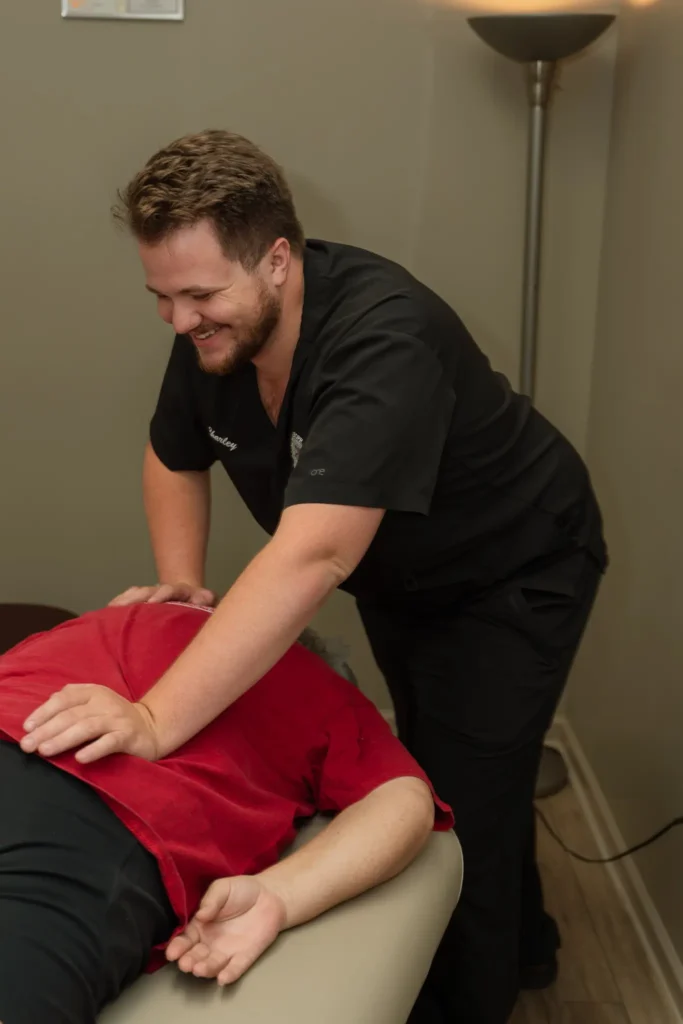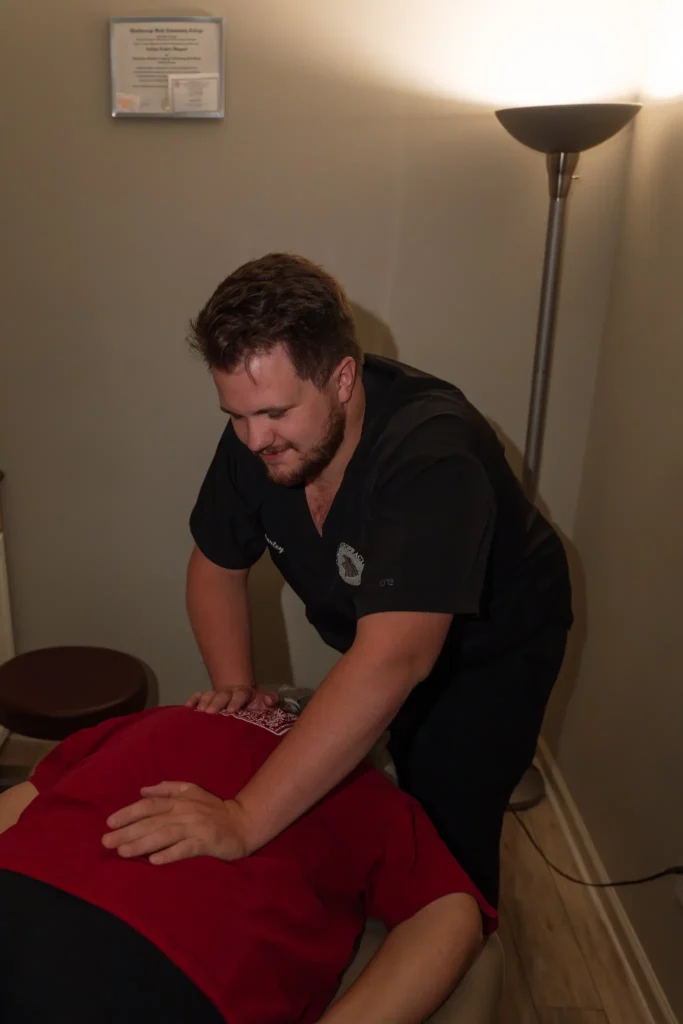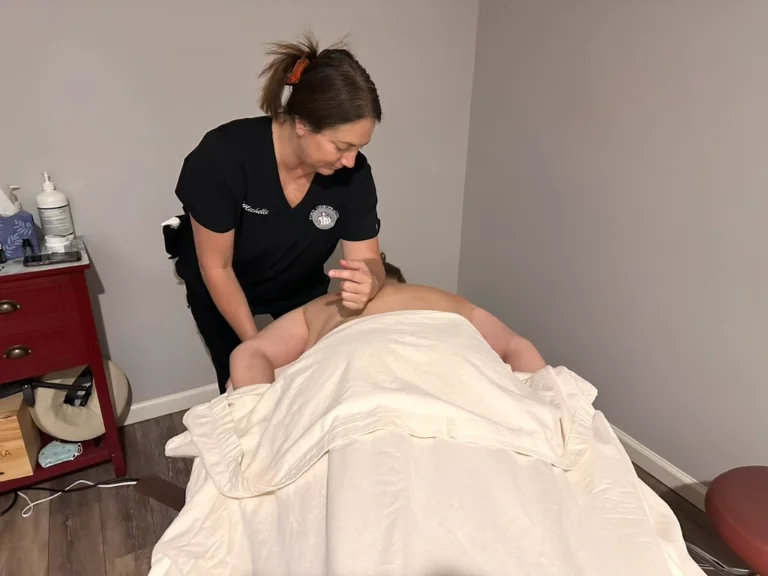Pain Relief
Massage therapy aids in pain relief by reducing muscle tension, increasing blood flow, and triggering the release of endorphins.
Massage Therapy

Benefits of Massage Therapy
Massage therapy isn't just for relaxation- it is a powerful tool that can be used to alleviate a multitude of musculoskeletal pain.
Massage is very effective in treating problems that involve areas like the kneck, knee, and shoulder as well as many other areas of the body. Our licensed massage therapists are trained to address specific conditions like plantar fasciitis, rotator cuff tendinopathy, neck strains, and many other issues- all while being overseen by a doctor. When appropriate, we also file to insurance plans which cover massage.

Massage therapy is a wonderful tool that can help alleviate a multitude of musculoskeletal aches and pains.
Massage therapy aids in pain relief by reducing muscle tension, increasing blood flow, and triggering the release of endorphins.
Massage therapy promotes blood circulation, reduces inflammation, and releases muscle tension, which aids tissue repair.
Massage therapy relieves stress by reducing cortisol levels, promoting relaxation, and triggering the release of endorphins, leading to a sense of calm.
What can Massage Therapy help with?
Massage Therapy can treat a wide variety of conditions. You can click on a condition to learn more about the condition and the treatment options available.
And so many more...
Whether you are looking for therapeutic work or simply a relaxation massage, we have options for all of your needs.
Our massage therapists are trained in many modalities, but we primarily practice Precision Neuromuscular Therapy and the Fascial Distortion Model. Both of these modalities of massage are focused, specific, and incredibly effective at treating a wide range of conditions.

We offer 30, 60, and 90-minute massages so that you can choose a time that best suits your needs. Whether you are looking for a relaxation experience or a more focused therapeutic session targeting specific areas of tension, our massage therapists have you covered.

You do not have to be a patient to be scheduled with one of our independent contractors for a 30-min or 60-min massage. Dr. Ford also has therapists working directly under him that only work on established patients in a clinical setting.
Our full body massages take place in a warm, comfortable, quiet room. Soft music may be played to help you relax. You will lie on a table especially designed for your comfort.
Trigger point therapy is offered in a more clinical setting.
Most full body massage techniques are traditionally performed with the client unclothed. However, it is entirely up to you what you would like to wear. You should undress to your level of comfort, and you will be properly draped during the entire session.
Trigger point therapy is performed fully clothed, though we do recommend that loose, comfortable clothing be worn.
The practitioner will leave the room while you undress, relax onto the table, and cover yourself with a clean sheet.
You will be properly draped at all times to keep you warm and comfortable. Only the area being worked on will be uncovered.
You and the practitioner will discuss the desired outcome of your session. This will determine which parts of your body require massage. A typical full-body session will include work on your back, arms, legs, feet, hands, head, neck, and shoulders. You will not be touched on or near your genitals (male or female) or breasts (female).
This depends on the techniques used. Many massage therapists use a form of Swedish massage, which is often a baseline for practitioners. In a general Swedish massage, your session may start with broad, flowing strokes that will help calm your nervous system and relax exterior muscle tension. As your body becomes relaxed, pressure will gradually be increased to relax specific areas and relieve areas of muscle tension. Often, a light oil or lotion is used to allow your muscles to be massaged without causing excessive friction to the skin. The oil also helps hydrate your skin. You should communicate immediately if you feel any discomfort so that another approach may be taken. Massage is most effective when your body is not resisting.
Prior to the massage, feel free to ask the practitioner any questions about the technique or the upcoming session. During the massage, make yourself comfortable. The practitioner will either gently move you or tell you what is needed throughout the session (such as lifting your arm). Many people just close their eyes and completely relax, communicating if/ when they need more or less pressure, another blanket, or anything else relevant to the session. If you have any questions regarding the session or about the particular technique you are receiving, feel free to ask the practitioner.
Most people feel very relaxed. Some experience freedom from long-term aches and pains developed from tension or repetitive activity. After an initial period of feeling slowed down, people often experience increased energy, heightened awareness, and greater productivity which can last for days.
Massage can help release chronic muscular tension and pain, improve circulation, increase joint flexibility, reduce mental and physical fatigue and stress, promote faster healing of injured muscle tissue, improve posture, and reduce blood pressure. Massage is also known to promote better sleep, improve concentration, reduce anxiety, and create an overall sense of well-being.
Yes. That’s why it’s imperative that, before you begin your session, the practitioner asks general health questions. It is very important that you inform the practitioner of any health problems or medications you are taking. If you are under a doctor’s care, it is strongly advised that you receive a written recommendation for massage prior to any session. Your practitioner may require a recommendation or approval from your doctor.